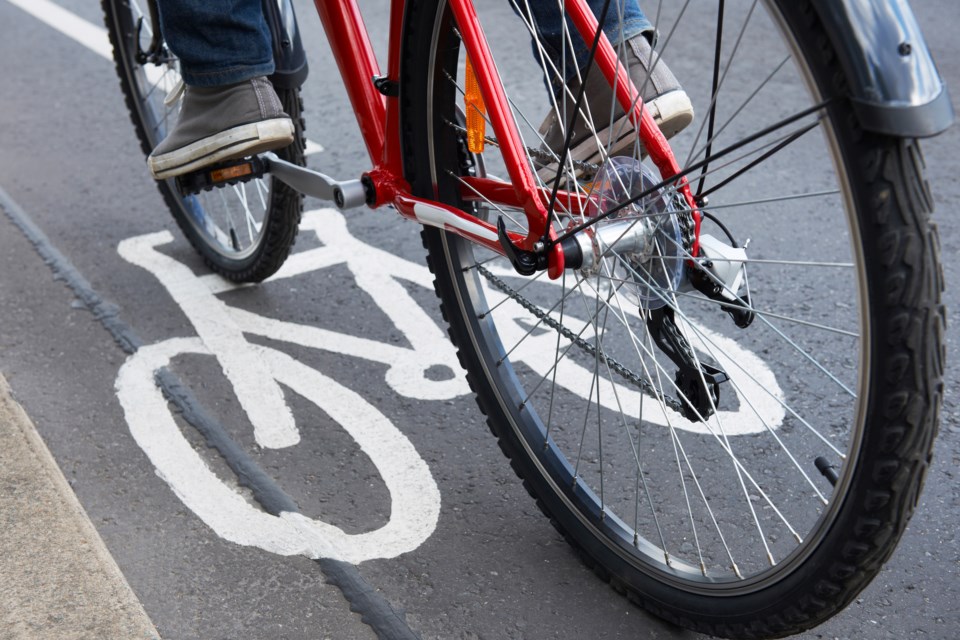The following letter to the editor was submitted by Jan Anthony Mendoza in response to the Ainslie Street Reconstruction plans.
This letter is in response to the plans for the Ainslie Street Reconstruction plans.
Change is scary. Business owners everywhere, especially since the COVID-19 pandemic have been on edge for new things that will have a detrimental impact on their business, their revenue, their customers, and themselves. Especially those business owners alongside Ainslie Street, which will be affected by road reconstruction for a period of months, with changes to the streetscape that will reverberate for years to come.
Revenue might be down not only during the construction period but in general when the one or two parking spots directly in front of their business is taken away by a bike lane. Their personal parking spot may be taken away permanently. The future sounds scary when there is something new and novel (to Cambridge) coming to your doorstep.
But there is nothing to fear, because there is opportunity to be had in having protected and dedicated bike lanes (or cycle tracks) right in front of your business.
But how could that be, you might ask. You might be someone that hasn't been on a bike since you were a teenager. You can't imagine why someone or anyone would want to bike here, in Cambridge, where the car is king, queen, and the royal court. People bike to have exercise, not to get to places, for goodness sakes!
Compare these ideas to the opposition among some business owners had when they close down and pedestrianize Main Street in Galt and Queen Street in Hespeler. It was scary to not have through traffic and parking spots in front of your business when the street was closed to traffic.
But during the street closures, the whole vibe of the street changes. People come to their businesses because they see the store front. A city street was once like a mall before cars took over streets, and pedestrianizing the street made it so once again. The street is an attraction once again, rather than a thoroughfare.
How does this relate to bike lanes? Time and time again, all over the world, where dedicated and protected bike lanes are installed, the average total revenue of the businesses alongside these bike lanes go up, even when the on-street parking is removed.
In Toronto, where bike lanes on Bloor Street were installed, the number of businesses that reported 100 or more customers per day had increased.
People who arrived on foot or on bike visited Bloor the most often, and people who drove or took transit visited nearly four days less per month.
Local stores next to new protected cycle tracks in New York City have had their sales increase by 49 per cent over that of other locations where a protected cycle track is not present, where sales have only been up by 3 per cent.
In study after study around the world and in Ontario, there has not been a single report that shows that having a dedicated cycle track replacing on-street parking having been a financial detriment to an area.
The reality is that on-street parking does not attract as much business as dedicated and safe cycling infrastructure.
If you build it, they will come, which is shown by London, Ontario's expanding cycling infrastructure. Some areas in that city have an increased cycling traffic of 48 per cent year over year to an average of 12,300 riders per month.
This might boggle the mind for many auto-oriented Cantabrigians. I myself was surprised to learn that in that Bloor Street study, while merchants believed that at least 25 per cent of their customers came by car, fewer than 10 per cent reported arriving by car.
In a European city not unlike the Region of Waterloo, business owners in Graz, Austria estimated 58 per cent came by car whereas the real number was 32 per cent. But it makes sense.
Living in Galt, much of my own shopping and restaurant patronizing is within walking distance, but many business owners come from other parts of the city.
I spent many a Saturday morning making my rounds through Galt's stores after visiting the Cambridge Farmer's Market. I walk to the many restaurants on the pedestrianized Main Street. Imagine how many more people that these businesses can attract that need parking that take up less room than a car!
However, I would suggest the following for the City of Cambridge and Region of Waterloo to do the following to help alleviate the feelings of anxiety and uncertainty for business owners in Galt.
- Connect the Downtown Cambridge BIA with businesses and business groups elsewhere such as Toronto, Ottawa, Hamilton, and London where dedicated cycle paths and improved cycling infrastructure has made business better for them and help the businesses in Cambridge navigate through the changes.
- Provide ample bike parking in front of businesses to attract cyclists.
- Coordinate with the Downtown Cambridge BIA to encourage certification with Ontario By Bike of businesses as bike-friendly business.
- Provide tailored plans for each business affected by the construction and addition of the cycle track for loading and unloading.
- Provide plans for snow clearing of these cycle tracks.




